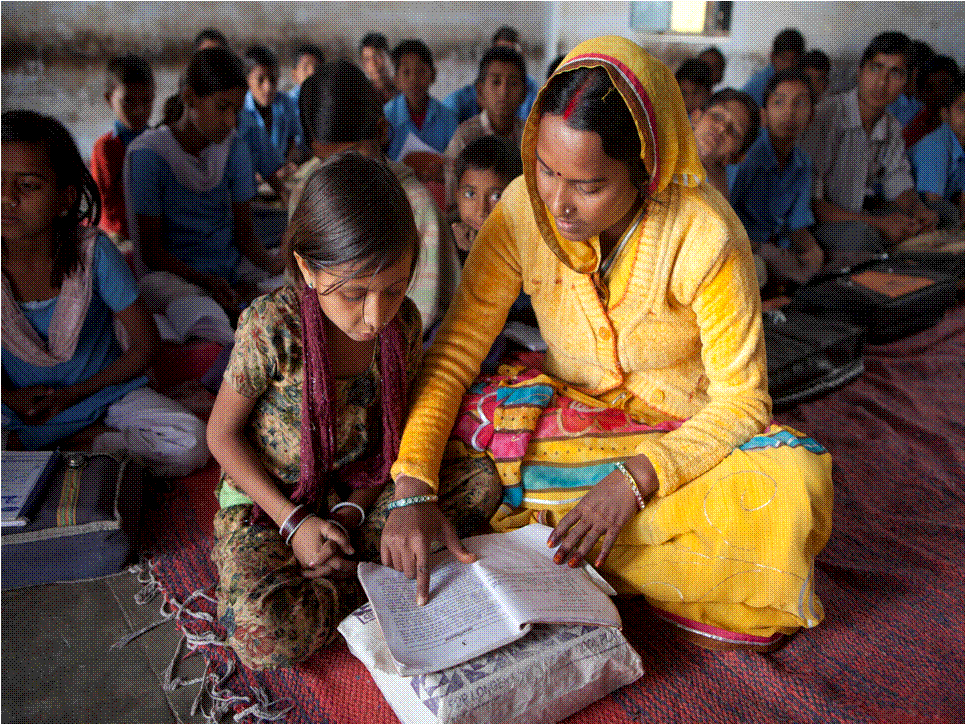
Educate Girls: Bridging the gender gap one girl at a time
In India, far fewer girls are enrolled in schools and many of them drop out. Although literacy rate in India has been rising from 65 % to 74% in the past 10 years, the gender gap is substantial with female literacy of 65% versus male literacy of 82%. Educate Girls aims to close this gap and improve the girls’ enrolment, retention and learning outcomes in public schools by mobilizing underutilized resources from communities, government, teachers and parents. Educate Girls’ programs have been adopted in two districts, covering 4,500 schools impacting more than 200,000 girls in Rajasthan.
Impact
- Over 20,000 girls brought back to school.
- A total of 8,227 girls trained as leaders through Girls’ Councils.
- A total of 2,581 Parent led School Management Committees formed.
- 620 trained village based volunteers working in the field.
Learning outcomes among 28,000 children in three months:
- Hindi – Reading of a story went up from 15% to 35%.
- English – Reading of a sentence increased from 9% to 29%.
- Math skills improved from 11% to 29%.
Beneficiaries
All girls between the age 6-14 in the Pali and Jalore districts of Rajasthan, India.
Sustainability
Sustainability is inbuilt into the Educate Girls model
- Educate Girls works towards systemic reform by strengthening existing government and community structures.
- Educate Girls leverages the participation of underutilized community stakeholders to bring girls into schools and improve overall school quality.
Sustainability of the program rests in creating “community ownership” of government schools. This is done through:
- Effectively functioning Parent led School Management Committees and trained Panchayati Raj Institution members: Six members per school are trained and empowered through hand-holding support over 2 years. An independently functioning School Management Committee is able to self-govern the schools. Their insistence on school improvement and girl friendly infrastructure has led to higher girls’ enrollment and retention, and improved learning levels and outcomes for all children.
- Teachers training: One teacher is trained per school in child centric teaching and learning techniques.
- Volunteer training: One volunteer per village is recruited and trained to continue to champion the cause of girls’ education at the village and school level.
- Girl Leadership: A 13 member Girls Council of adolescent girls in every school is formed and provided with life skills education. This helps to build the next generation of girl leaders and increase the voice in the school system.
Together these elements work to ensure sustainability after we exit.
Innovation
Working in close to 4,500 schools in India, Educate Girls has created a scalable and sustainable model that galvanizes, as it empowers stakeholders into action.
The innovation in the model lies in the fact that it is:
- A “comprehensive model” that works towards school reform.
- A combination of scale and depth. Even at very large scales the Educate Girls model delivers measurable results for enrollment, attendance and learning.
- Cost effective – at less than 2 USD per girl per year.
- Sustainable as it creates “community ownership” of government schools.
- Enlisting the participation of village based volunteers to create awareness, ensure enrollment and retention, improve learning and empower girls in schools and communities.
Scalability
Educate Girls is currently implementing its model in close to 4,500 government schools in the Pali and Jalore districts of Rajasthan. Over the next five years, Educate Girls aims to scale to 9 of the worst gender gap districts in Rajasthan reaching out to over 3 million children.
Source of funding
- The Government of India
- Small and Big Foundations
- Individual Donors